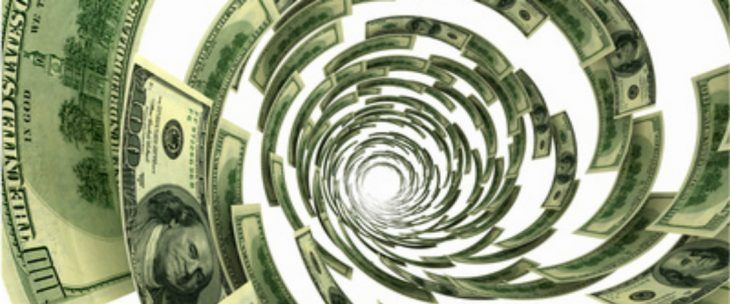Credit card debt hit $21.9 billion in the third quarter, $80 billion by year end
by December 8, 2016 3:12 pm 231 views

American consumers cast positive votes about the economy each time they reach for a credit card to make purchases, and that reach totaled more than $21.8 billion in the third quarter with spending on track to tip hit $80 billion by year end.
According to a WalletHub report released Thursday (Dec. 8), third-quarter credit card debt was the seventh highest quarter of the past 30 years and raises some concern for debt managers given that consumers spent $34.4 million more in the second quarter, and spending is on par with 2007 levels just ahead of the recession in 2008. Financial analysts see the higher spending trend as a contrast to the deleveraging action by consumers in past years. In the first quarter of 2016, WalletHub said consumers paid down $27.5 billion in credit card debt, the smallest pay down since 2008.
“So it is not a question of whether consumers are weakening financially, but rather how long this trend toward pre-recession habits will last and just how bad it will get. Unfortunately, the immediate forecast does not appear too bright. WalletHub projects that we’ll end 2016 with a net increase of roughly $80 billion in credit card debt, which would bring outstanding balances within striking distance of 2008’s all-time record and push the average amount owed by indebted households to a perilous $8,380,” noted Alina Comoreanu, research analyst at Evolution Finance.
The $21.9 billion in credit card debt that consumers added in the third quarter is nearly 60% above the post-Great Recession average. Credit card debt has been trending higher since 2013 and is moving toward the $1 trillion mark which was a breaking point for the economy in early 2008.
“We now owe almost exactly as much as we did the quarter before the Great Recession officially began. If charge-off rates begin to rise, things could get ugly fast,” Comoreanu said.
WalletHub reports charge-off rates were 2.86% in the third quarter, still more than a point less than the $3.95% rate of third quarter of 2007. Debt accumulation of $21.9 billion in the recent quarter was also less than the $38.3 billion accrued in same quarter of 2007. But total outstanding credit card debt the $927.1 billion reported in the recent quarter is just almost even with the $927.4 billion reported in the third quarter of 2007, just ahead of the recession. She said consumers have regressed in 16 of the past 23 quarters with respect to paying down debt and increasing credit card spending.
“The average indebted household’s balance rose to $7,941 in Q3 – just $523 below the tipping point WalletHub identified as being unsustainable,” Comoreanu said.
The study also notes that the level of bad debt tends to rise as spending increases. Last year roughly $25.5 billion of bad debt was charged off. Just through three quarters of 2016, $20.7 billion has been charged off.
Wells Fargo economists don’t have the same pessimistic view for the consumer despite the uptick in credit card debt, noting that the overall economy is better shape than it was in 2008 when the banking crisis hit. They said corporate earnings are growing, albeit slowly but home prices are rising and that’s the biggest asset most consumers own. Equities recently hit new highs and jobless rates remain quite low overall.
Wells Fargo expects consumer spending to remain on a positive trajectory in 2017, but also noted rising healthcare costs and likely higher gasoline prices are a threat to what has been extra cash flow on consumer balance sheets.
The Wells Fargo economists also expect lower taxes to help consumers and businesses under the new Trump Administration. That said, the economists note the prolonged period of economic expansion may have reached the end of its lifespan if tax savings are not realized and interest rates do move higher.
The WalletHub report notes that it’s not too late for consumers to avoid hitting a debt wall, but they need to pay down more credit card debt while rates remain low. Carrying high credit card when rates begin to rise can bust budgets.
